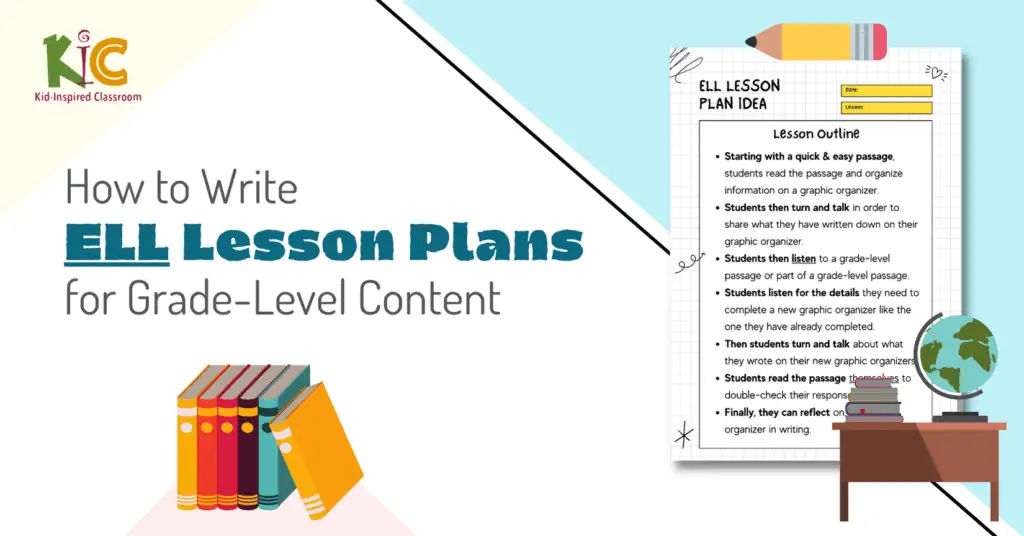
Setting Objectives
The objectives for a particular grade are a wonderful bird’s eye perspective on what students should be able to do by the end of the grade.
When lesson planning for a particular class though, we want to choose something concrete and manageable.
Students should be able to accomplish these daily goals in a single class. I find it helpful to use the terms manageable and measurable.
- Manageable means that the average student can accomplish the goal in a single class.
- Measurable means that the student is doing something to show mastery.
Then all of our activities will bring students towards that final part of the class where they pass a challenge to show that they have accomplished the day’s goal.
Kid-Inspired Teacher
If you need help with this, check out section 2 of the book Kid-Inspired Teacher on Guidelines for Crafting Student-Centered, Productive and Stress-Free Classes.
Let’s Look at a Specific Example
Let’s take an example, finding the main idea and supporting details in a text.
For this, and most any objective, we want to come up with activities that get students practicing the objective in speaking, listening, reading and writing.
In order to focus on understanding the words “main idea” and “supporting details,” we’ll want to start with a quick and easy text before moving on to a grade-level text.
It also helps if our quick and easy texts is goofy, or at least written in an engaging, fun way.

Later, once students have understood the vocabulary of the objective and what they need to do to accomplish it, we can move on to more difficult grade-level texts.
Only, after they have practiced with an easy text, they will better understand what they need to accomplish with the grade-level text. That way they can focus on one thing at a time.
Class Progression
We can use the following progression to accomplish the objective utilizing all 4 language domains: listening, speaking, reading and writing.
- Starting with a quick & easy passage, students read the passage and organize information on a graphic organizer.
- Students then turn and talk in order to share what they have written down on their graphic organizer.
- Students then listen to a grade-level passage or part of a grade-level passage.
- Students listen for the details they need to complete a new graphic organizer like the one they have already completed.
- Then students turn and talk about what they wrote on their new graphic organizers.
- Finally, students read the passage themselves to double-check their responses.
- Finally, they can reflect on the graphic organizer in writing.
Differentiation
We can take this one step further in order to differentiate for students at different levels.
- Beginner – Low Intermediate Students (Or Entering to Emerging): Provide students with specific words they can use as well as sentence stems to complete the graphic organizer.
- Intermediate to Upper Intermediate Students (Or Developing to Expanding Or Transitioning): provide students with a word bank that they can use to complete the graphic organizer.
Finally, each class, each student needs to do something concrete to show mastery of the skill in order to make sure that no one goes home empty-handed.
Let’s talk about that in the next section.
Challenges & Check-Ins
Little one-on-one conferences with the teacher are extremely helpful.
Students who have completed the graphic organizer and discussed it with a partner come up to the teacher for a one-on-one conference. You can make this like a final challenge they have to pass.
For example,
- You could ask students to explain to you the main ideas and supporting details of the passage they have read without looking at their graphic organizers or the text.
- If they haven’t come up with acceptable answers, you can give them some direction and send them back to keep trying. They can work together with other students or work alone, and when they think they are ready, they can come back up and try again.
- Once a student passes the final challenge, you can have them reflect on their graphic organizers by writing a paragraph summarizing the main idea and supporting details.
- For any students who complete all of the work, you can create a space in the classroom for them to play board games or participate in some other fun activity as a part of free play.
- As more and more students head over for free play time, you are freed up to work with students who may be struggling.
- The goal is to get each and every student across the finish line.
Grade Level Guides
For more tips and strategies on helping ELLs access grade-level content, there are links below for guides to specific grade levels.
Currently, there are guides for grades 2-5. There are more to come.
Each guide has general tips, specific tips for accessing the skills of the common core, and research-based strategies and activities.
- Guide to the Second Grade ->
- Guide to the Third Grade ->
- Guide to the Fourth Grade ->
- Guide to the Fifth Grade ->
Materials & Resources
In a native English-speaking context, 2nd Grade English Learners need to be accessing rigorous 2nd-grade materials. The materials in the Kid-Inspired ESL Curriculum Membership are meant to be a bridge to get students from where they are to where they need to be.
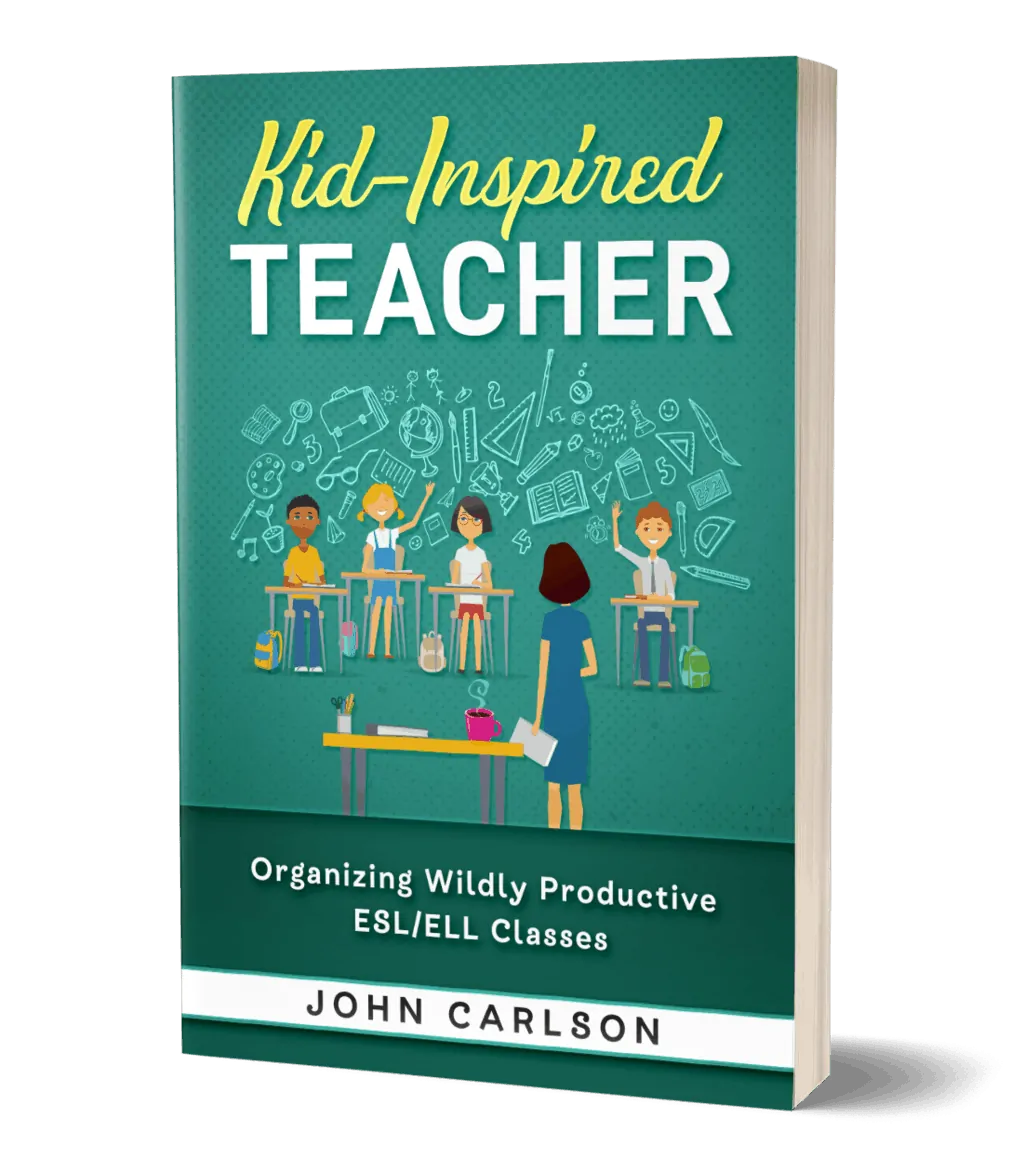

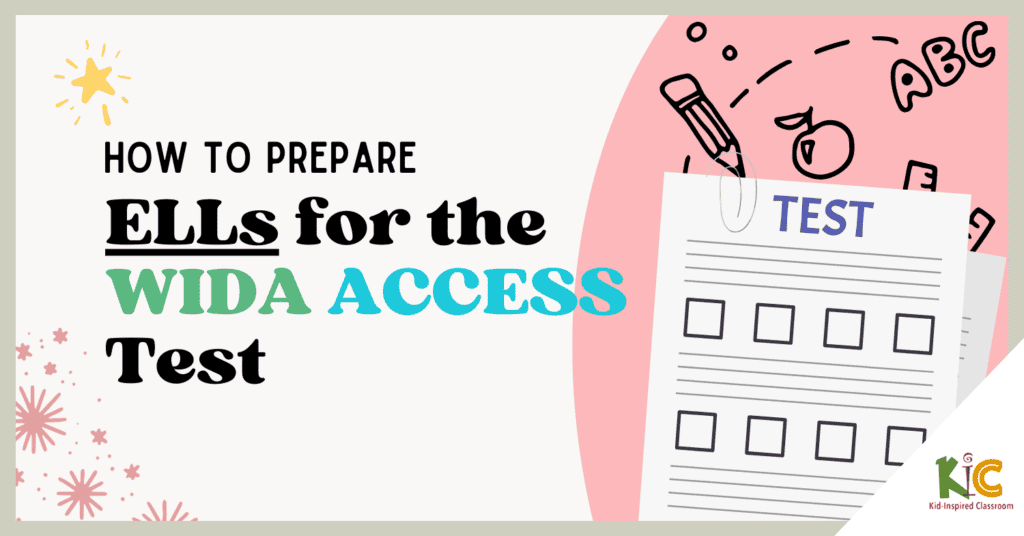
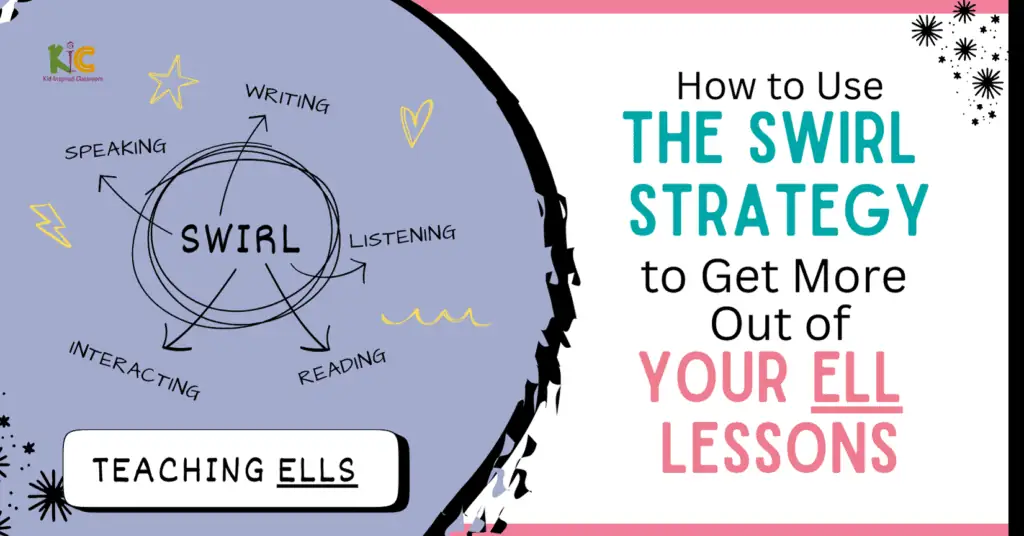
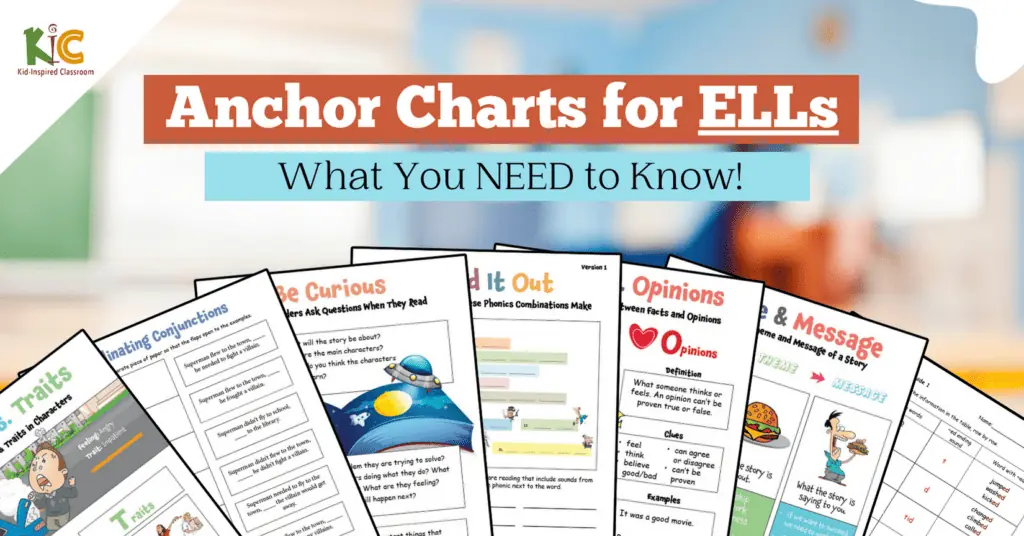
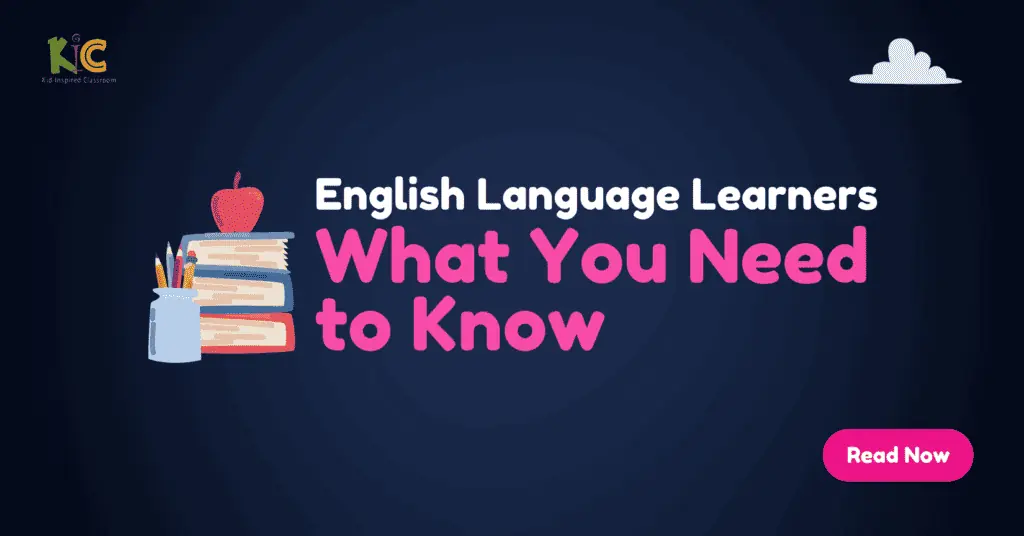
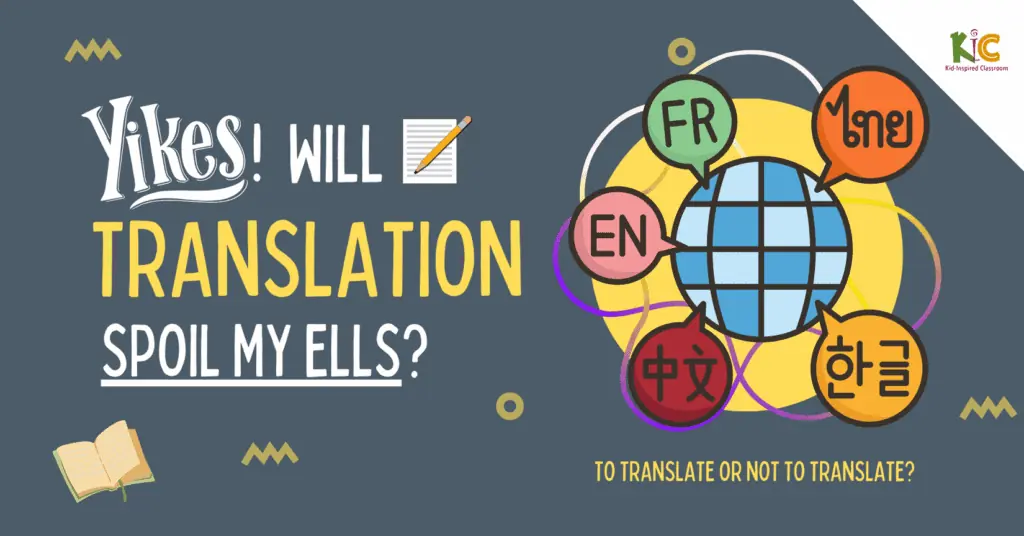

I’m looking at your lesson plans for beginner 1. Just wondering. . . The website shows a lesson for survival English then some phonics lessons. However, the way in which you number the lessons are in a different order. What do recommend? Proceed with the road map provided on the website or follow the numbered sequence?
Hi Christina, I just responded to your email, but I’ll leave a note here as well just in case. Here is a quick article on the numbering of the lesson pages which should be helpful: https://support.kid-inspired.com/faqs/lesson-page-numbering